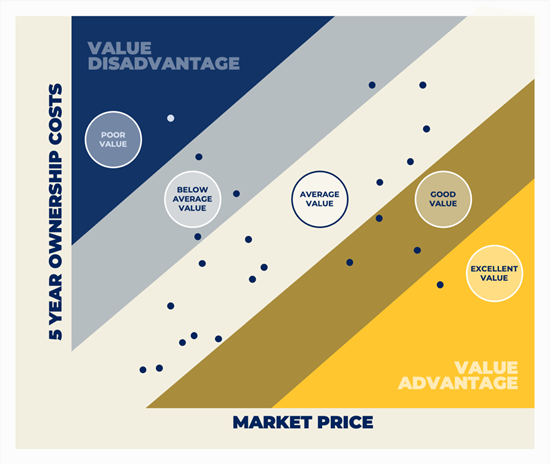If two vehicles have the same purchase price, but different ownership costs, the vehicle with the lower ownership costs is a better value than the one with the higher ownership costs. However, most vehicles do not have the same purchase price, so to measure and compare a vehicle's value, Vincentric uses a multi-step approach.
First, Vincentric measures the cost of ownership for over 18,000 vehicle configurations from model years 2020-2024. Cost of ownership is calculated by combining the costs associated with depreciation, insurance, repairs, maintenance (scheduled and unscheduled), finance, fuel, taxes and state fees (including any federal EV tax credits), and opportunity costs. This produces the “measured” cost of ownership for each vehicle.
Next, vehicles are assigned to segments based on vehicle type, market position, and size. This allows Vincentric to determine a vehicle's "expected" cost of ownership based on a statistical model that correlates the price and cost of ownership of the vehicles within that specific segment. This correlation is represented graphically in the chart below by the line identified as "average value." Any vehicle that falls below the average value line is a better value than a vehicle that is above the average value line.
To complete the process, Vincentric calculates the difference between a vehicle's "expected" cost of ownership and its "measured" cost of ownership. The vehicle that is the greatest percentage below the "expected" cost of ownership is determined to be the best value in its segment.
This statistically driven approach allows Vincentric to measure value in an unbiased manner, and help consumers and the automotive industry better understand how ownership costs impact the creation of value for the buyer.

< Back to Vincentric Best CPO Value in America Awards